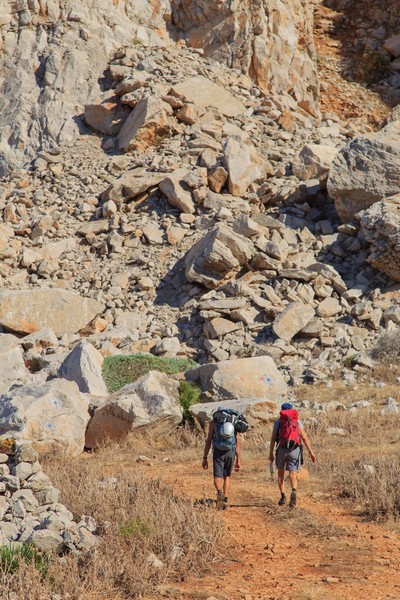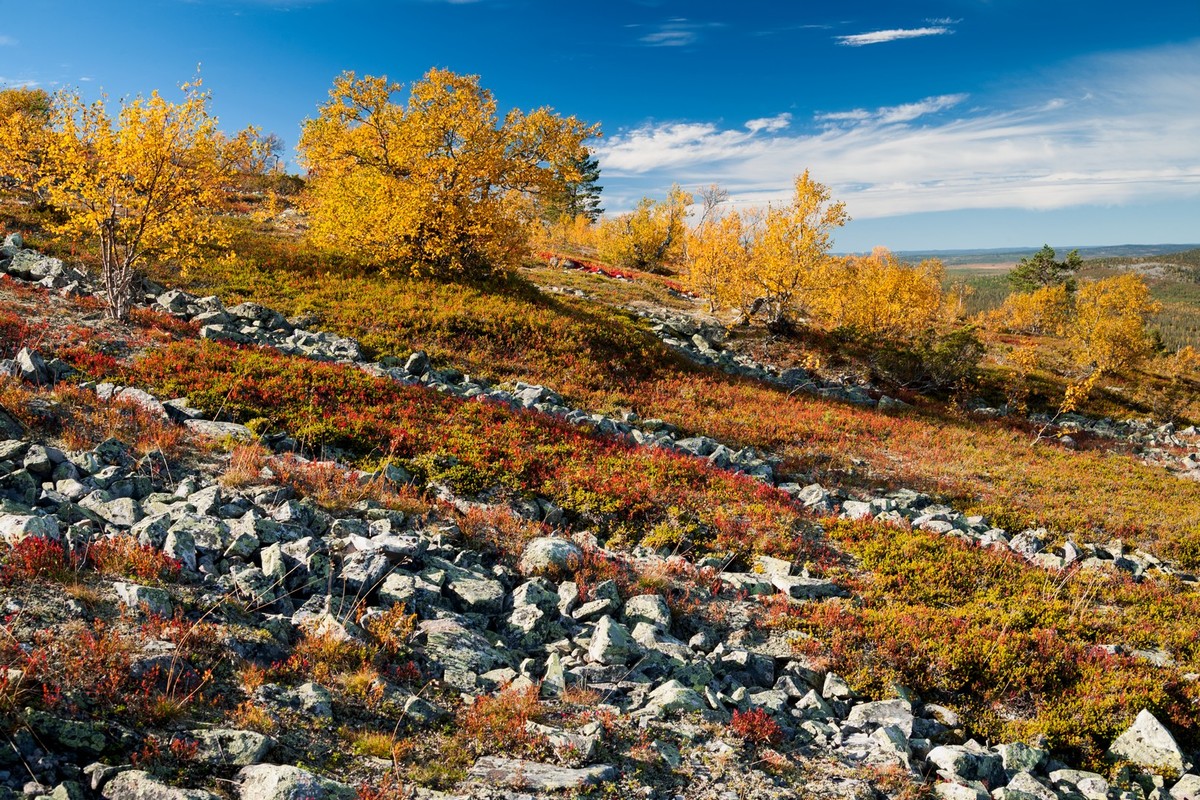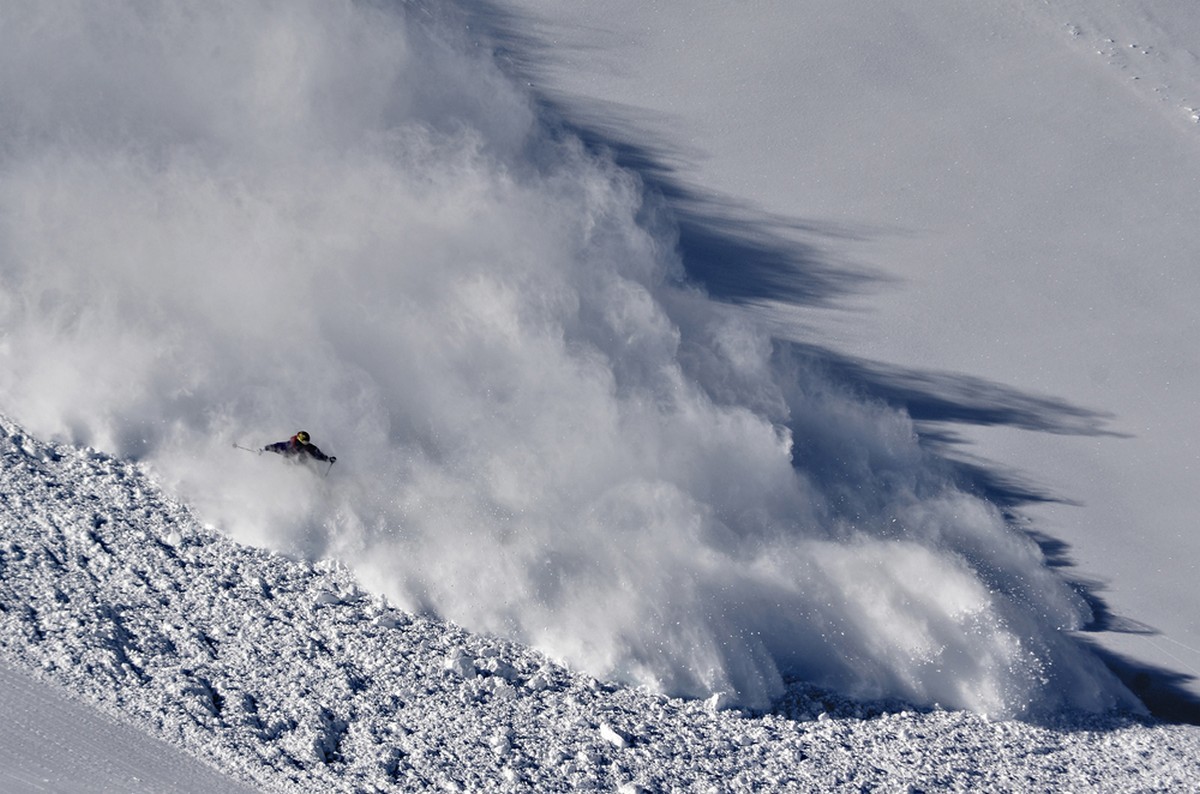9. Weathering
Contents
9.1 Weathering
Weathering is a term that means the breaking down of rock, stones and minerals. The rocky surfaces our planet wear down and diminish gradually over the course of millennia as a result of weathering.
Weathering can be divided into two broad types: mechanical and chemical weathering. Heat weathering and frost weathering are forms of mechanical weathering. Chemical weathering is caused by acidic substances that have dissolved in water.
 Landslides are common in the mountainous regions of India.
Landslides are common in the mountainous regions of India. 9.2 Chemical weathering
 Chemical weathering is caused by acidic substances that have dissolved in water. These substances break down rocky surfaces, finally breaking or dissolving the rock completely.
Chemical weathering is caused by acidic substances that have dissolved in water. These substances break down rocky surfaces, finally breaking or dissolving the rock completely.Acidic substances from the soil, air or vegetation can dissolve in water. For example, various lichens exude acidic substances that break down the surface of the rock. Chemical weathering is very common in areas where the most common rock type is chalkstone or limestone. Such areas can be found in Greece and Croatia, for example. These karst areas are characterized by depressions and stalactite caverns.
In karst areas, the surface of rocky areas are usually quite dry. This is the case because the water quickly flows into the inner parts of the rock through cracks caused by chemical weathering. When doing so, the water continues to erode these cracks even more.
Deep inside the bedrock of a karst area, the water can weather the rock significantly, creating large caverns. The characteristic stalactite formations of these caverns are caused by chalk-rich water that has dripped down from the ceiling of the cavern over the course of millennia.
Stalactite caverns can be found in the Czech Republic, Slovenia, Italy, Croatia, and Greece, for example.
The structure of a stalactite cavern.
9.3 Heat weathering
 Heat weathering is common in regions with warm and dry climates. It is caused by large changes in air temperature between daytime and night.
Heat weathering is common in regions with warm and dry climates. It is caused by large changes in air temperature between daytime and night.In desert regions, the days are extremely hot. During the night, the air temperature can drop down to below zero degrees Celsius.
When the Sun shines during the day, rocky surfaces are heated up drastically, causing them to expand.
When the temperature drops during the night, the temperature of the rocky surface likewise decreases. As a result, the surface of the rock begins to contract. When this process repeats itself day after day, the surface of the rock begins to crack.
Finally, the surface will break completely. This can result in landslides.
9.4 Frost weathering
Frost weathering is common in areas with cold and wet climates. These kinds of regions include mountain ranges and northern tundras.
Frost weathering is caused by ice. During sunny days, the snow on the mountain or the tundra begins to melt. The water then flows into cracks in the rock. When the temperature once again drops below zero, the water in the crack begins to freeze and to expand. As the ice expands, it stretches and breaks the rock that surrounds its.
In time, frost weathering can cause landslides, which create formations of fragmented rock on the slopes of the mountain or tundra.

Fragmented rock formations in Lapland.
Frost weathering is caused by ice. During sunny days, the snow on the mountain or the tundra begins to melt. The water then flows into cracks in the rock. When the temperature once again drops below zero, the water in the crack begins to freeze and to expand. As the ice expands, it stretches and breaks the rock that surrounds its.
In time, frost weathering can cause landslides, which create formations of fragmented rock on the slopes of the mountain or tundra.

Fragmented rock formations in Lapland.
9.5 Earth's gravity causes landslides
 Landslides occur in mountainous where rock material has been broken down by weathering. Mudslides are especially dangerous types of landslides. They are common after long periods of rain, when the soil is wet and muddy.
Landslides occur in mountainous where rock material has been broken down by weathering. Mudslides are especially dangerous types of landslides. They are common after long periods of rain, when the soil is wet and muddy.Mudslides can also take place when strong earthquakes or volcanic eruptions occur. This was the case in Columbia in the year 1985, where the eruption of the volcano Nevado del Ruiz resulted in an enormous mudslide that drowned over 30 000 people.
A landslide occurs when large chunks of rock or soil are detached from the surface of a mountain slope. In the picture on the right, a whole part of a road has disappeared as the result of a landslide.
Smaller rocks and sand can cause rockslides when they fall down a mountain or hill. The material of these slides will accumulate in piles near the bottom of the mountain or hill.
During the winter, avalanches can occur on snowy mountain slopes. They can be fatal to skiers, snowboarders and valley inhabitants. Avalanches can sometimes be caused by human activity, such as traffic.
Some factors increase the risk of landslides and avalanches. For example, the avalanche risk of a steep slope is greater than that of a gentle slope. Cutting down trees can also increase the risk of landslides and avalanches, which is why forestry is strictly regulated in mountainous areas in many parts of the world.

Avalanches pose risks to skiers, snowboarders, and valley inhabitants. Avalanches are more probable on steep slopes than on gentle slopes.
Summary
Weathering is the breaking down of rock, stone or mineral.
- Mechanical weathering includes heat and frost weathering.
- Chemical weathering is caused by acidic substances that have dissolved in water.
- Mass slides can occur on mountain slopes. They are caused by weathering, and can take the form of landslides, mudslides, rockslides, and avalanches.
- Key words: weathering, frost weathering, heat weathering, chemical weathering, karst, stalactite, fragmented rock, landslide, mudslide, rockslide, avalanche.